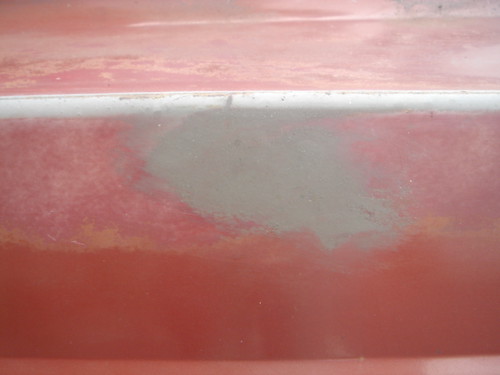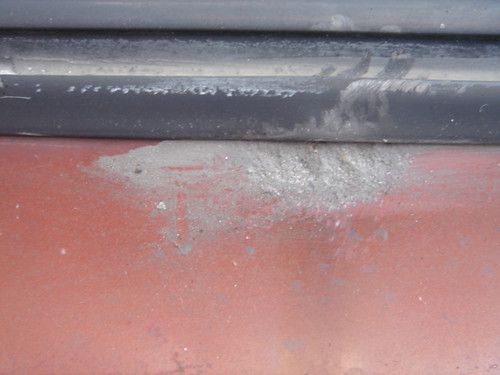Most peoples vehicles will be way too shiny for this trick, but it might be useful to someone.
A while ago I reported the use of crumpled aluminium foil as an abrasive pad, self forming and especially useful for cleaning awkward shapes, like, for example, corroded spokes. The abrasive action can be enhanced by incorporating grit, grinding paste or toothpaste into the crumples, though this would often be overkill.
One drawback is that the foil can get quite uncomfortably hot to the fingertips (I assume this is just due to friction. One is, incidentally, making thermite, but I don’t think its likely to be ignited). Edit:I suspect some of the heat might be generated by rapid oxidation of the freshly exposed aluminium surfaces.
Used wet with vegetable oil the pad stays comfortable, and rust, old paint/primer, and aluminium flakes form a protective paste which can look rather like a metallic primer.
Ordinary veg oil takes a long time to set, and will probably never be a suitable base for a proper paint job, though good enough for my present banger-bodging purposes.
Boiled linseed oil, commonly used as a wood finish, (if you can get it here, or a local equivalent - tung oil?) would set quicker. One could probably also use laquer or paint, but that’s getting to be too much trouble.


 You mean…er…socially? Perhaps with rum in it?
You mean…er…socially? Perhaps with rum in it?